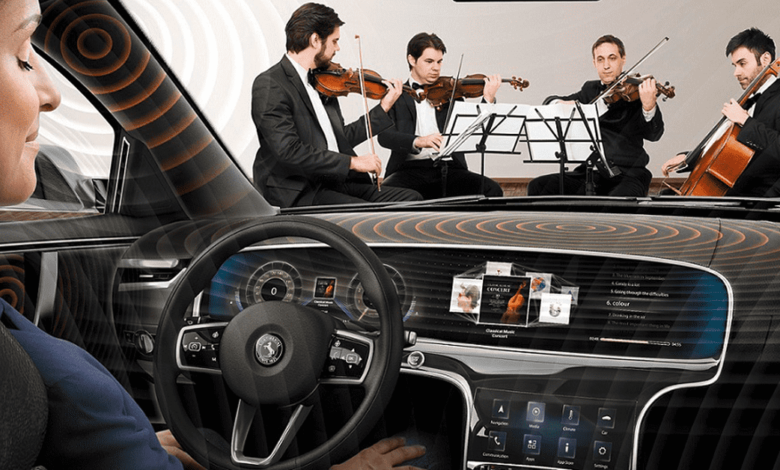Continental develops speaker-less car audio systems with excellent acoustics

Inspired by the functional principle of string instruments, Continental, the global tyre and automotive technologies manufacturer, is reinventing the car audio system. Present in the Middle East since 2009, Continental, through its technology arm, is replacing conventional loudspeakers with actuators that create sound by vibrating certain surfaces in the vehicle to generate a natural, 3D sound experience.
In comparison to conventional speaker technology, the speaker-less audio system brings many advantages. At considerably lower weight, with dramatically reduced box volume and lower electricity consumption, the new Continental Ac2ated Sound solution delivers excellent acoustics – experts have given the sound system top scores for its performance.
This new innovation from Continental is the latest in a long line of technologies developed to improve the experience of car drivers and passengers around the world. As well as producing high quality tyres, the brand’s remarkable technological output includes Lane Departure Protection functions, Tyre Pressure Warning systems, Electronic Control Units and Head-Up Displays that are fitted to diverse range of cars that travel the Middle East’s roads.
“In the age of electric vehicles, car manufacturers are looking for innovative solutions to drastically reduce the weight of their vehicles and gain space for passengers and new technologies”, said Johann Hiebl, head of the Continental business unit Infotainment and Connectivity. “On the other hand, design and sound quality mustn’t suffer from this goal. Our approach is to treat the car itself as an instrument.”
The challenge lies in the profound understanding of noise, vibration, and harshness (NVH) in the widest sense which is required to achieve excellent acoustics. Typically, experts have either the vehicle expertise or the acoustics expertise. Continental has both in-house plus the manufacturing know-how.
To deliver good 3D sound, conventional high-end car audio systems can easily require between ten and 20 or more speakers, giving the system a weight of up to 15 kg and a total box volume of 10 to 30 litres. Continental’s speaker-less system can weigh as little as 1 kg and require as little as 1 litre of total box volume. As a result, the technology can be integrated into any model, from high end sedans to small electric vehicles. However, the main benefit is the sound quality.
Speaker-less technology offers further potential beyond car audio. It can also provide a sound source for human-machine interaction concepts, such as navigation instructions or the indicator sound.
Treating the vehicle as an instrument
The sound waves are generated by compact actuators, similar to the core of a conventional speaker. These transducers consist of a magnet and a coil, which generate micro-vibrations. However, instead of an oscillating membrane, which is part of a current speaker, larger existing components and surfaces in the vehicle are excited by the transducers to radiate the sound.
If using a violin for comparison, the bow and strings act as the transducer. The violin’s bridge equals the location and bonding of the transducer to the surface which equals the instrument body. Specific areas in the vehicle lend themselves to each of the required three main frequency ranges. For example, the A-pillar is suited for high frequencies, while the door panels have the right properties for generating medium frequencies. Large components such as the roof lining or rear shelf can be used to generate low frequencies.
In a demo vehicle, Continental is also presenting the scalability of the system by switching between an entry-level low-cost system using three audio channels, a mid-range system using four to six channels and even a premium solution using up to 12 channels.



